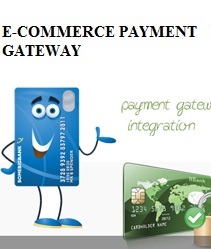Are you amongst those Ecommerce beginners who are perplexed by the concept of payment gateways? Fear not; although selecting your Ecommerce payment gateway is a crucial decision, it becomes a lot easier if you know the fundamentals of how a payment gateway works, the different types of gateways, and what factors need to be considered before choosing the apt one for your e-commerce business. In this article, we have attempted to simplify these concepts for your benefit.
How a payment gateway works
Here’s the basic step-by-step procedure of how a payment gateway works in case of credit card payments:
1. Customer selects a payment option to place an order on your website and enters his credit or debit card details.
2. The details are encrypted using SSL (Secure Socket Layer Encryption) and transmitted from the customer’s web browser to the Merchant’s Web Server.
3. The details are again SSL encrypted and thereon forwarded from the Merchant’s Web Server to the Payment Gateway.
4. Next, the Payment Gateway passes on the information to the payment processor of the Merchant’s bank, which in turn sends it to the specific bank to which the credit card belongs.
5. The latter generates a response code and sends it to the processor, which in turn sends it to the payment gateway.
6. The payment gateway, after receiving the response, transmits the same to the customer’s web server, which conveys the success or failure of the transaction to the customer.
7. While the steps mentioned above take place in a couple of seconds, the payment is received by the merchant after he periodically submits the authorization received from the payment gateway to the bank, which takes about 2-3 days.
To get into further details and know about other modes of payment, you can refer to http://en.wikipedia.org/wiki/Payment_gateway
Types of Payment Gateways:
As an e-commerce business owner, you are termed as the merchant and you hold a merchant account directly with a bank. All customer payments on your e-commerce website, after being authorized by the payment gateway, are transferred to your merchant account. Now, based on the aspect of merchant account, there are two types of payment gateways- those that require you to open a separate merchant account prior to availing their services, and those that do not require the same. The latter are also known as Integrated Payment Gateways with examples like PayPal, Pay Junction, Pay Point, iTransact, Station, Quantum Gateway and so on.
In the Indian market, e-commerce entrepreneurs tend to choose between two broad options, the first being the payment gateways offered by banks themselves such as ICICI PaySeal and the other being the third party payment gateway providers such as CC Avenue and EBS. Although Paypal is the most popular option worldwide, its currency conversion fees on transactions in Indian rupees, is a major let-down for the average Indian consumer; hence it is not a very popular in India. While third party providers offer low initial set-up fee, less paperwork and multiple payment options as compared to banks, the payment gateways provided by the banks have lower TDR (Transaction Deduction Rate, which is the amount you need to pay for every transaction to your payment gateway service provider). In fact the initial set-up fees and the TDR tend to be inversely proportional to each other. Most payment gateway service providers in India also charge Annual Maintenance Fees. (Our upcoming article on comparison of payment gateways will provide further insights)
Essential considerations to choose your payment gateway
While selecting any Ecommerce payment gateway, it is necessary to consider the following features:
1. Compatibility: The technology of the payment gateway should be compatible with that of your shopping cart.
2. Processing Speed: Always check the average proposed transaction time of the gateway so that your customers don’t get hassled.
3. Server Security: The confidential credit card details must be handled, recorded and transmitted over a secure server in order to eliminate the possibility of any security breach or malpractice.
4. Options for multiple payments: The wider payment options you provide, the better it is for your business as it will enable a wider base of customers to purchase from your site.
5. User friendly: Needless to say, the payment gateway must provide ease of use to potential clients and also as far as the backend is concerned.
6. AVS Security: Address Verification System or AVS Security is a security feature that enables the matching of the billing address of a card holder to the shipping address specified during the checkout process.
7. Technical Support: The Technical Support services need to be prompt, efficient and available whenever you require assistance.
8. Customizable Interface: The gateway should give you the flexibility to customize the design of the interface as per your website for a seamless customer experience.
9. Cost: There are two types of costs involved, the first is the initial set-up cost and the second is the charge per transaction. In both cases, the amount charged varies based on the volume of your transaction. Make sure you get the total picture of the cost perspective before arriving at any decision.
10. Bounce Rate: This refers to the rate of transaction failures. If your payment gateway has a high bounce rate, you will tend to lose out on many customers.
Conclusion
Hope you found the above guidelines useful. To gain further clarity, you can read more at http://www.wikihow.com/Integrate-a-Payment-Gateway-Into-a-Website.




Add Comment